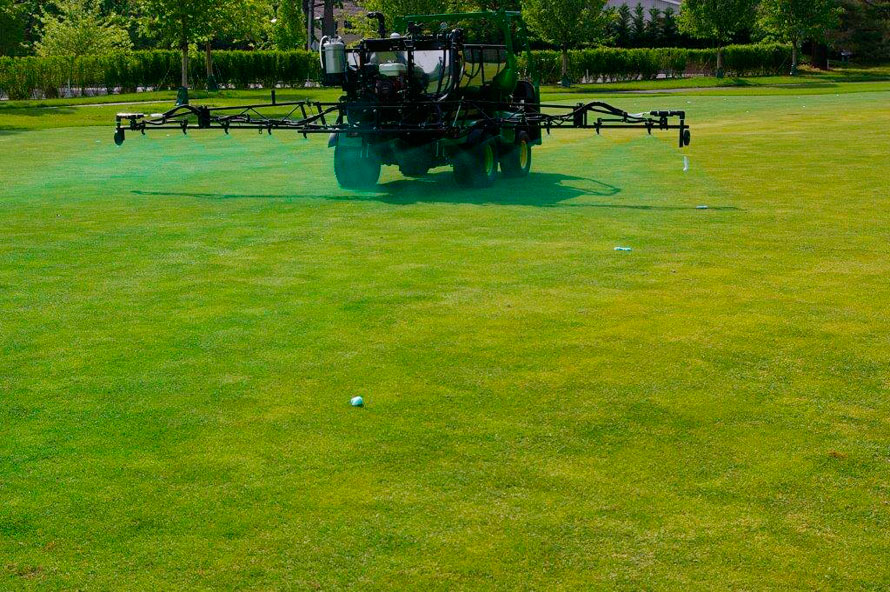Golf course monitoring programs conducted in New York and several other states indicate little to no risk of water contamination of pesticides applied to golf turf (Appendix B) The application of pesticides is often made with low concentrations of active ingredients, often between 1 to 5% solutions. Simple attention to proper application procedures, especially avoiding direct discharges into water bodies or near wellheads, should typically suffice.
In addition to selecting an appropriate pesticide based on the selection criteria and evaluated using available tools, a number of factors should be considered when applying pesticides to avoid water quality impacts. For example, a number of site-specific considerations for the use of pesticides should be evaluated using the results from the site analysis to identify areas where the risks of pesticides reaching surface or groundwater are greater (such as steep slopes, shallow water tables, and areas with frequently wet soils). In addition, pesticides should be applied accurately and with care to avoid conditions that can increase the chances of runoff, leaching, and drift.
Factors contributing to greater risk for groundwater and surface water contamination. Source: USGA 1995
|
Chemical
|
Soil
|
Site
|
Management
|
|---|---|---|---|
| High solubility | Porous soil (sand) | Shallow water table | Incomplete planning |
| Low soil adsorption | Low organic matter | Sloping land | Misapplication |
| Long half-life (persistent) | Near surface water | Poor timing | |
| Low volatility | Frequently wet soils | Over-irrigation |
 Typical fairway pesticide application using foam and dye for accuracy. Source: Robert Alonzi.
Typical fairway pesticide application using foam and dye for accuracy. Source: Robert Alonzi.Preventing Runoff and Leaching
Pesticides can be transported into water by several means:
- surface runoff following precipitation events or irrigation
- leaching through the soil horizon to reach groundwater
- adsorbtion on eroded soil that reaches surface water
- flowing directly to groundwater through sinkholes and permeable rock
The use of vegetated buffers may be the single most important strategy mitigating the impact of runoff as these buffers can “capture” pesticides and prevent them from reaching waterways. In addition, the timing and location of applications should be thoroughly evaluated. Preventing runoff and leaching of pesticides is heavily influenced by weather and irrigation scheduling. Pesticide applications followed by heavy rain or irrigation can cause the pesticides to leach into groundwater. This leaching can occur even for nonpersistent pesticides (those with a short half-life). Pesticide applications on saturated soils following heavy rain or irrigation can also lead to surface runoff. In addition, avoid applying pesticides in sensitive areas.
Preventing Drift
Drift can potentially cause water quality impacts, damage to susceptible nontarget crops, and a lower than intended rate to the turfgrass, thus reducing the effectiveness of the pesticide. Two types of drift occur: airborne (spray) drift and vapor drift. Spray drift is influenced by many interrelated factors including droplet size, nozzle type and size, sprayer design, weather conditions, and the operator. The amount of vapor drift depends upon a pesticide’s volatility and atmospheric conditions such as humidity and temperature. Volatile turfgrass pesticides should be avoided. In some cases, the pesticide label may indicate low volatility. Low volatility, however, does not mean that a chemical will not volatilize under conducive conditions, such as high temperatures or low relative humidity. For more information, see Appendix H, Preventing Drift.
